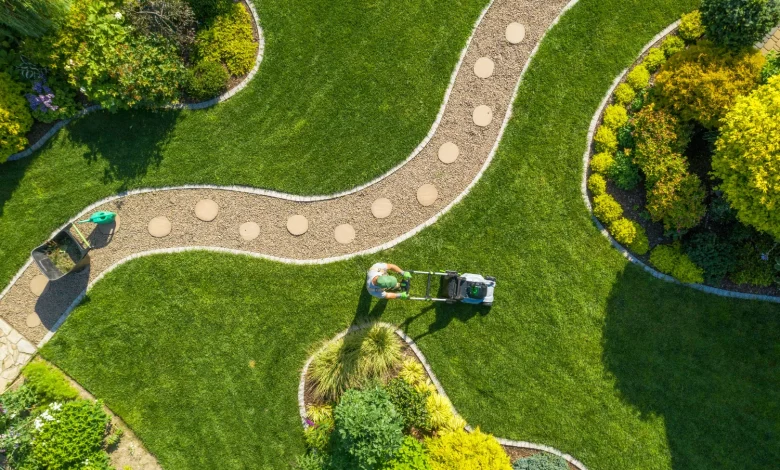10 Expert Landscaping Tips to Transform Your Outdoor Space

Creating a beautiful and functional outdoor space goes beyond just planting flowers or laying down some grass. Landscaping is both an art and a science—it involves strategic planning, design elements, and consistent maintenance to create an environment that complements your home and lifestyle. Whether you’re starting from scratch or upgrading an existing yard, these expert landscaping tips will help you elevate your outdoor space into a serene and stylish oasis.
Start with a Clear Vision
Before picking up a shovel or buying plants, the most critical step in landscaping is envisioning the final outcome. Think about how you want your outdoor space to feel—relaxing, lively, elegant, or rustic. Consider how you’ll use the space: Will it be for entertaining guests, playing with kids, growing vegetables, or simply enjoying nature?
Visualizing the entire layout will help you make better decisions about placement, scale, and design. Sketch out your ideas or use digital landscaping tools to map the space. Consider sun exposure, drainage, privacy needs, and accessibility during the planning process. A clear vision helps you stay focused and avoid costly changes later.
Choose the Right Plants for Your Climate
Selecting plants that thrive in your specific climate zone is key to a successful landscape. Native plants, in particular, require less water, are more resistant to local pests, and support the local ecosystem, including bees and butterflies. Do some research on your area’s hardiness zone and find out which trees, shrubs, flowers, and groundcovers are best suited.
Also, consider the microclimates within your yard—shady spots under trees, sunny corners near fences, or windy areas near walls. Group plants with similar sunlight and water needs together for easier maintenance and healthier growth.
Focus on Layered Landscaping
Layering is a design principle that brings depth and dimension to your garden. Instead of planting everything at the same height, incorporate a mix of tall trees, medium shrubs, and low-lying plants. This mimics how plants grow in nature and gives your landscape a more organic and visually pleasing look.
Use tall trees or ornamental grasses as a backdrop, shrubs and flowering bushes in the middle, and smaller perennials or groundcovers in front. Layering also helps create natural pathways and visual flow throughout the space, making your yard appear more expansive and dynamic.
Create Focal Points
A well-designed landscape guides the eye and offers points of interest throughout the space. Focal points serve as anchors that draw attention and balance the visual elements. These can be anything from a large tree, a water feature, a sculpture, or a cozy seating area.
When choosing focal points, make sure they suit the scale of your yard. A small garden pond might work perfectly in a compact backyard, while a firepit with a circular bench could be ideal for larger spaces. These features add personality and enhance the sense of place in your outdoor environment.
Integrate Hardscaping Elements
Hardscaping refers to the non-living parts of your landscape—walkways, patios, retaining walls, edging, or decorative stones. These elements bring structure and definition to your yard, making it more functional and organized.
When integrating hardscaping, use materials that complement your home’s architecture. Natural stone, brick, wood, or concrete pavers can be used to create elegant walkways or entertainment spaces. Good hardscape design improves traffic flow, reduces erosion, and increases usability, especially in sloped or awkward areas.
Use Lighting to Enhance Ambiance
Outdoor lighting is often overlooked in landscaping, but it can dramatically change the mood and functionality of your space. Thoughtfully placed lights not only highlight landscape features but also ensure safety after sunset.
Use soft lighting to accentuate pathways, spotlight trees or architectural elements, and create cozy atmospheres in lounging or dining areas. Solar-powered lights are eco-friendly and easy to install, while low-voltage systems offer more design flexibility. Well-placed lighting adds depth, security, and elegance to your yard.
Embrace Sustainable Landscaping
Sustainability is more than a trend—it’s a responsible approach to landscaping. Choose eco-friendly practices that reduce waste, conserve water, and support biodiversity. Start by reducing lawn size and opting for drought-tolerant plants or xeriscaping to minimize irrigation needs.
Install a rainwater harvesting system or drip irrigation to water plants efficiently. Use compost and mulch to enrich the soil naturally and suppress weeds. Avoid chemical fertilizers and pesticides by incorporating organic gardening methods. A sustainable landscape is healthier for you, your family, and the environment.
Design for Seasonal Interest
A truly beautiful landscape should have visual appeal all year round, not just during spring and summer. By selecting a variety of plants that bloom or change color in different seasons, you can keep your garden looking fresh throughout the year.
Incorporate evergreen shrubs for winter structure, spring-blooming bulbs for early color, summer perennials for lushness, and fall foliage plants like maple or oak for vibrant hues. Include ornamental grasses or seed heads that look attractive in colder months. Designing for seasonal interest ensures your landscape remains engaging and dynamic in every season.
Build Functional Outdoor Living Areas
Landscaping isn’t only about aesthetics—it’s also about functionality. Think of your yard as an extension of your home and create defined outdoor living areas. This could include a patio for dining, a deck for lounging, a play area for kids, or a quiet corner with a hammock for relaxation.
Define these zones with furniture, planters, or low walls. Use pergolas, trellises, or tall shrubs to provide shade and privacy. Add outdoor rugs, string lights, or fire features to make the space more inviting. Functional outdoor areas increase your home’s usable space and boost its value.
Maintain with Consistency and Care
The final, and often most overlooked, part of great landscaping is regular maintenance. Even the best-designed gardens can become overgrown or unkempt without consistent care. Set up a routine for mowing, weeding, pruning, fertilizing, and watering.
Inspect your plants for pests or diseases and address any issues early. Re-mulch beds annually and replenish soil nutrients as needed. Take time to observe how your landscape changes with the seasons and make adjustments as necessary. A little attention goes a long way in preserving the health and beauty of your outdoor space.



